Suzanne Bauer explains how hosting Tibetan Monks transformed her life.
Did I really volunteer to host seven Tibetan Buddhist monks and their American driver in our home for nine days – just two hours before they came through our front door? Something very unexpected was happening. Here is the back story.
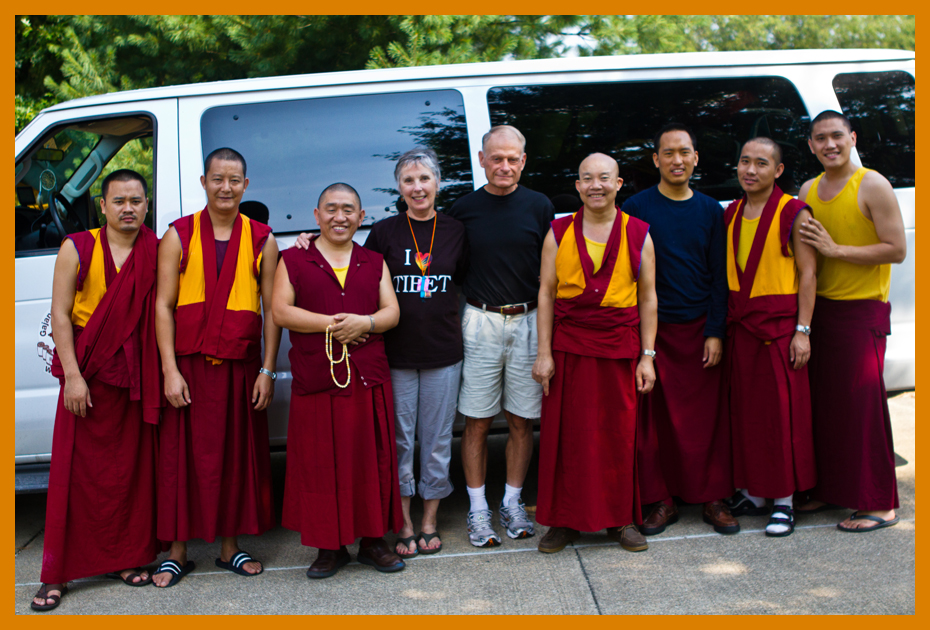
In July 2012, seven Tibetan Monks from India’s Gaden Jangtse Monastery made a stop in Canton, Ohio during their eleven-city World Peace Cultural Tour that crisscrossed North America. Their mission was to raise awareness about Tibetan Buddhism and culture, promote harmony and peace, and cultivate compassion and kindness for all living beings. Canton’s Merging Hearts Holistic Center sponsored the monks. They needed a place to stay, and when I learned they provided their own food and cooked their own meals, I said to myself: “How hard can this be?” I originally volunteered to host one or two monks; however, upon arrival at Merging Hearts, we discovered all seven monks and their driver were to stay in the same place. Without any hesitation, I offered my home to eight perfect strangers. My husband, John, was as surprised as I and agreed with this last-minute plan. Did I mention that we are not Buddhist and knew very little about Tibet? Clearly, something unusual and unexpected was in the works. What unfolded during this visit was transformative.
While we were not nuanced in Tibetan Buddhism, we did know something about the current Dalai Lama and the events leading to his escape from Tibet in 1959, his dangerous trek over the Himalayas into India, the establishment of the Tibetan government-in-exile in India, and the plight of the Tibetan people under Chinese occupation.
When the monks first arrived at the house, John and I were not sure what to expect. However, when they came through our front door, the ice was quickly broken when one of the monks asked in perfect English: “What is your wi-fi password?” John and I were immediately at ease and felt a surge of powerful, positive energy, a feeling that lasted during their stay, and it returns whenever something reminds us of their visit.
The monks toured the house and quickly developed a plan. The Head Monk and the driver would stay in separate rooms. The rest of the monks would stay together in our finished basement. No problem. They brought in their gear, put away a supply of groceries they had purchased on their way to our house, and logged onto their iPads.
Geshe Dorij Wangchuk served as Head Monk. ‘Geshe’ is an academic title equivalent to a Ph.D. in Buddhist Philosophy. When he noticed John and I struggling with the pronunciation of his name, he said: “You can call me Geshe.” Several of the monks spoke beautiful English while others were still learning the language. The monks were attentive to Geshe’s gentle leadership style. We stayed out of their way as much as possible and witnessed the tapestry of events unfold.
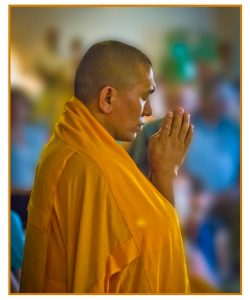 Actually, I had done some planning. I had prepared a vegetarian meal to offer the one or two monks I thought I was hosting. Fortunately, I made enough for a crowd. This meal turned out to be the first of many we shared with the monks. Although they prepared their own meals, I also prepared food to share with the monks. The simple act of preparing and sharing meals helped join our two cultures which are worlds apart, culturally and metaphorically. This experience added a whole new dimension to the term “soul food,” and we received generous portions. We gradually, effortlessly slid into a gentle rhythm doing ordinary things with extraordinary people.
Actually, I had done some planning. I had prepared a vegetarian meal to offer the one or two monks I thought I was hosting. Fortunately, I made enough for a crowd. This meal turned out to be the first of many we shared with the monks. Although they prepared their own meals, I also prepared food to share with the monks. The simple act of preparing and sharing meals helped join our two cultures which are worlds apart, culturally and metaphorically. This experience added a whole new dimension to the term “soul food,” and we received generous portions. We gradually, effortlessly slid into a gentle rhythm doing ordinary things with extraordinary people.
Head Monk Geshe is also a Doctor of Tibetan Medicine and Director of the Gajang Tibetan Herbal Medical Centre at the monastery, which he co-founded in 2004. The Medical Centre serves the monastic and lay communities in Tibetan settlement camps and Indian villages near the monastery. Geshe has treated thousands of patients. He gives medical consultations at the monastery and also while traveling abroad. During his stay in Canton, he conducted medical consultations in a private room at the holistic center. His appointment calendar quickly filled up; no one was turned away. Tibetan medicine uses a sophisticated diagnostic method called ‘pulse reading,’ a technique that takes years to learn and master. During my consultation, Geshe closed his eyes, held one of my hands, and very lightly compressed each finger. Then he pressed the center of my palm and lightly compressed my wrist and forearm with his fingers. He did the same with my other hand. Nothing was rushed. He was relaxed, calm, and steady. Without hesitation, he perfectly described my health status and prescribed various herbal remedies.
The monks spent their days at Merging Hearts creating an elaborate sand mandala, a sacred art made of concentric diagrams to encompass a spiritual essence at the center. Mandalas have been used by many cultures throughout the 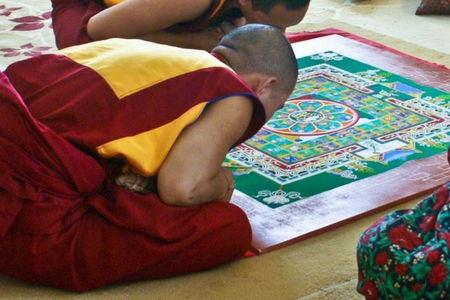 world in various forms. Traditionally, Tibetan sand mandalas were only permitted to be made in monasteries and observed by monks. The Dalai Lama decided to allow this practice to be used in public as a means of teaching Tibetan culture.
world in various forms. Traditionally, Tibetan sand mandalas were only permitted to be made in monasteries and observed by monks. The Dalai Lama decided to allow this practice to be used in public as a means of teaching Tibetan culture.
The colorful mandala is literally created by adding one grain of sand at a time. The finished mandala is composed of three-dimensional layers. It is extremely complex and delicate. Watching a mandala evolve is in the category of “Live Art,” but it is not a show. It is a meditative experience.
I was familiar with the Buddhist belief in impermanence and its 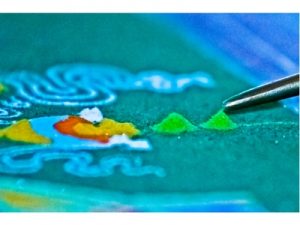 association with attachments: everything, either physical or mental, is temporary; since everything changes, attachment is the source of suffering. For me, this concept was brought to life with the completion of the sand mandala. The monks literally spent seven full days creating this work. I could not wait to see how it had progressed each day and marveled at its beauty and complexity. During the closing ceremony, the monks destroyed the sand mandala; a dramatic metaphor designed to demonstrate impermanence. This sacred art was returned to simple grains of sand. Each person in attendance received a small packet of mandala sand and was instructed to eliminate negativity by scattering the sand to purify a space of their choosing. This demonstration was just what I needed to grasp the wisdom of the temporary, impermanent nature of temporal things and ideas, and the connection to attachment and suffering.
association with attachments: everything, either physical or mental, is temporary; since everything changes, attachment is the source of suffering. For me, this concept was brought to life with the completion of the sand mandala. The monks literally spent seven full days creating this work. I could not wait to see how it had progressed each day and marveled at its beauty and complexity. During the closing ceremony, the monks destroyed the sand mandala; a dramatic metaphor designed to demonstrate impermanence. This sacred art was returned to simple grains of sand. Each person in attendance received a small packet of mandala sand and was instructed to eliminate negativity by scattering the sand to purify a space of their choosing. This demonstration was just what I needed to grasp the wisdom of the temporary, impermanent nature of temporal things and ideas, and the connection to attachment and suffering.
Meditation is a cornerstone practice in Tibetan Buddhism, and the monks have
been meditating for most of their lives. John and I had the privilege of 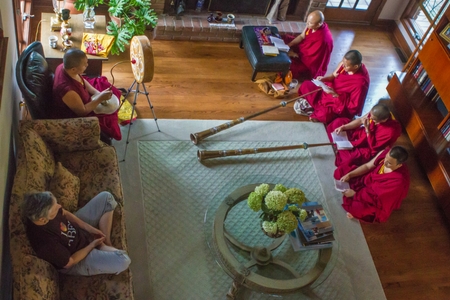 observing – and joining – the monks sitting in meditation in our home and at Merging Hearts. Meditating with experts; it was amazing. Each morning, the monks retreated to Geshe’s bedroom for a Puja. This consisted of chanting, conducting rituals, and burning incense while the monks were in a deep meditative state. It lasted for about 40 minutes. In words made famous by the Beach Boys, our home was filled with Good, good, good … good vibrations! After Puja, they prepared breakfast and were driven to Merging Hearts in their white van we called The Mobile Monastery or The Monk Mobile.
observing – and joining – the monks sitting in meditation in our home and at Merging Hearts. Meditating with experts; it was amazing. Each morning, the monks retreated to Geshe’s bedroom for a Puja. This consisted of chanting, conducting rituals, and burning incense while the monks were in a deep meditative state. It lasted for about 40 minutes. In words made famous by the Beach Boys, our home was filled with Good, good, good … good vibrations! After Puja, they prepared breakfast and were driven to Merging Hearts in their white van we called The Mobile Monastery or The Monk Mobile.
The monks literally smiled all the time and laughed often. John and I found ourselves smiling and laughing much more than usual. Happiness is contagious. The monks were relaxed and informal, and made themselves at home. They spent a lot of time outside and could be found playing pickup basketball in the driveway or walking in the neighborhood. I was grateful I had sent a message to our neighbors before they arrived: Be on the lookout for bald, Asian men wearing colorful robes.
The monks live in southern India at the Gaden Jangtse Monastery, home to 1400 monks. Geshe was born in Bhutan and entered the monastery at age 10. The other monks were all born in India after their families fled from Tibet following the Chinese takeover. Most entered the monastery between ages 10 and 12 years of age.
The time we spent with these wonderful, extraordinary men was a powerful experience beyond anything we could have expected. Our children and grandchildren were part of this experience and received the blessings of the monks-in-residence.
The monks made no attempt to convert us to their beliefs. This made a big impact on me. Our culture is filled with people and organizations aggressively pushing belief systems which are exclusive and limiting, based on guilt and fear messages. The monks delivered only positive messages of love, compassion, acceptance, and non-judgment. What a relief! I could breathe. I could enjoy the moment. I could be mindful of what was unfolding without feeling defensive or guarded. How powerful is that?
Several months later, John and I took a packet of mandala sand with us when we 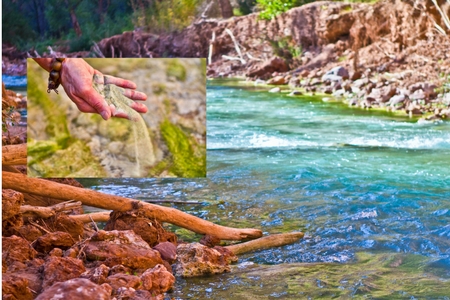 traveled to the Grand Canyon. We camped for three nights in the Havasupai Indian Reservation campground at the bottom of Havasu Canyon. We spoke with a Tribal Elder and Keeper of the Ceremonies who granted us permission to scatter the mandala sand into the Havasu Creek which runs behind the campground. This pristine spring water came over the beautiful Havasu Falls and flows into the Colorado River, then the Gulf of California, and finally into the Pacific Ocean. As the sand joined the water, we were reminded that all beings benefit when kindness and compassion are dispersed into the world.
traveled to the Grand Canyon. We camped for three nights in the Havasupai Indian Reservation campground at the bottom of Havasu Canyon. We spoke with a Tribal Elder and Keeper of the Ceremonies who granted us permission to scatter the mandala sand into the Havasu Creek which runs behind the campground. This pristine spring water came over the beautiful Havasu Falls and flows into the Colorado River, then the Gulf of California, and finally into the Pacific Ocean. As the sand joined the water, we were reminded that all beings benefit when kindness and compassion are dispersed into the world.
Whenever I started thinking about the monks, an idea kept circulating in my head: Suzanne, you are attached to those monks! That idea created a degree of distress. How could I feel guilty about being attached to monks? Had I learned nothing? Would the monks call this distress an example of suffering? Maybe I was not really attached to the monks but was connected to them. I was going down the rabbit hole! I started reading about connection and attachment. I struggled with this until I was able to reduce it to its lowest common denominator: Attachment drains energy; Connection boosts energy. This was the key: energy boost vs. energy drain! I was connected, not attached! No more distress. Problem solved.
Our interest in Tibetan culture grew. I read as much as I could about Tibet and the Dalai Lama. John and I love to travel, and we looked into visiting Tibet. We were informed that Tibet’s capital city Lhasa, the spiritual center of Tibetan Buddhism and former home of the Dalai Lama, has been transformed into a Chinese city. The Chinese have made aggressive efforts to extinguish the Tibetan culture. We were advised to visit Bhutan if we wanted to experience Tibetan culture. Bhutan is a small country bordering India and China and measures progress in terms of Gross National Happiness. Geshe was born in Bhutan.
We found a trip that went to both Lhasa and Bhutan. The information we had received about Tibetan culture in Lhasa appeared to be accurate. The situation is very sad. I emailed Geshe and told him our plans for visiting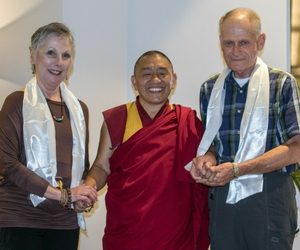 Bhutan. He said he would try to meet us there! Sure enough, as soon as we opened the door to our hotel room in Bhutan, the phone rang. It was Geshe! He joined us for dinner that night and returned the next night to speak with our traveling group. What a delightful, unexpected reunion and confirmation: connection, not attachment!
Bhutan. He said he would try to meet us there! Sure enough, as soon as we opened the door to our hotel room in Bhutan, the phone rang. It was Geshe! He joined us for dinner that night and returned the next night to speak with our traveling group. What a delightful, unexpected reunion and confirmation: connection, not attachment!
To preserve the details of hosting the monks, I wrote and published In the Company of Tibetan Monks: Opening Our Home, Hearts, and Minds to the Wonderfully Unexpected. The book is loaded with color photos and many details of the tapestry woven during their stay. You will be amazed to read about everything that went on; I promise! Proceeds from the book are donated to Geshe’s Herbal Medical Centre at the monastery. For information on purchasing the book, please visit unexpectedmonks.com.

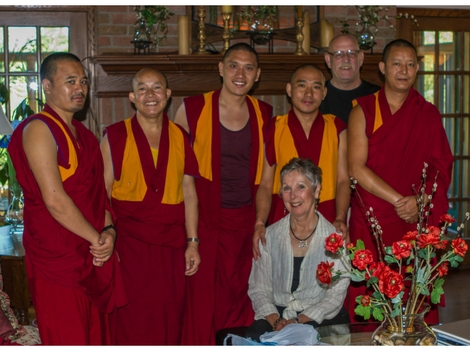

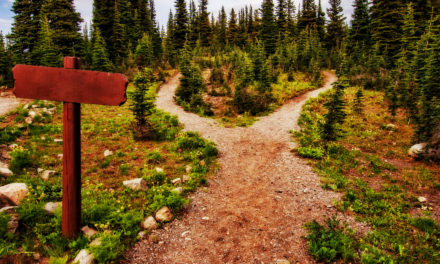
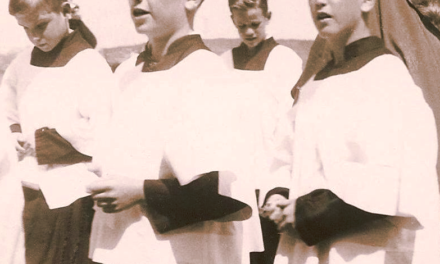


Suzanne Bauer is a gracious host, and this article inspires me to be open to unexpected guests.